Berlandiera lyrata, Lyreleaf Greeneyes
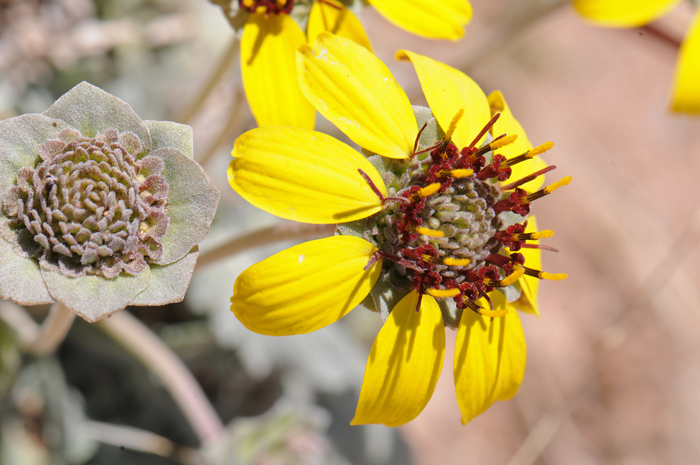
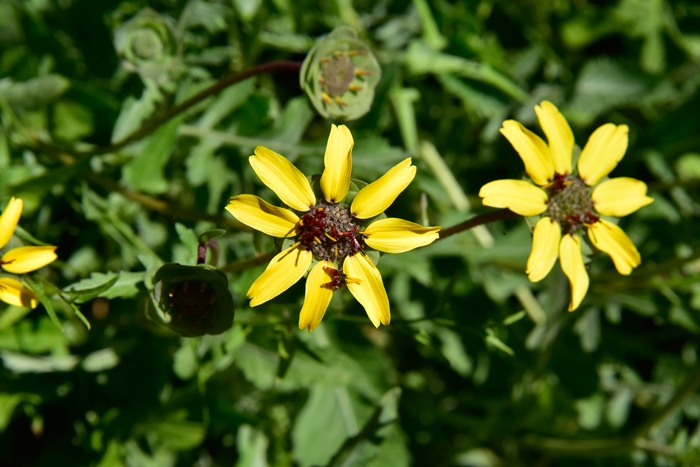
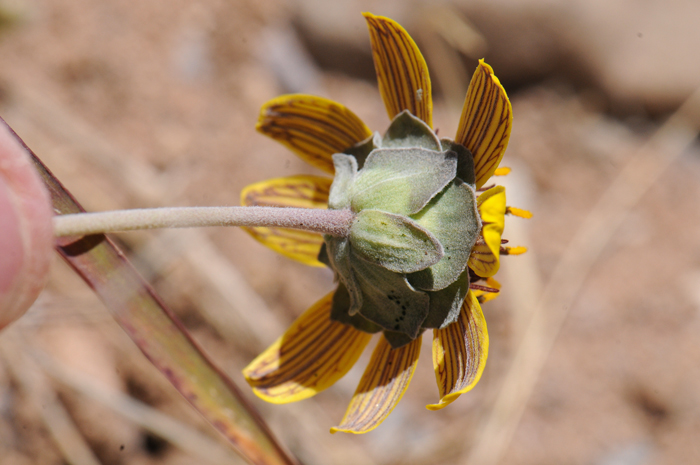
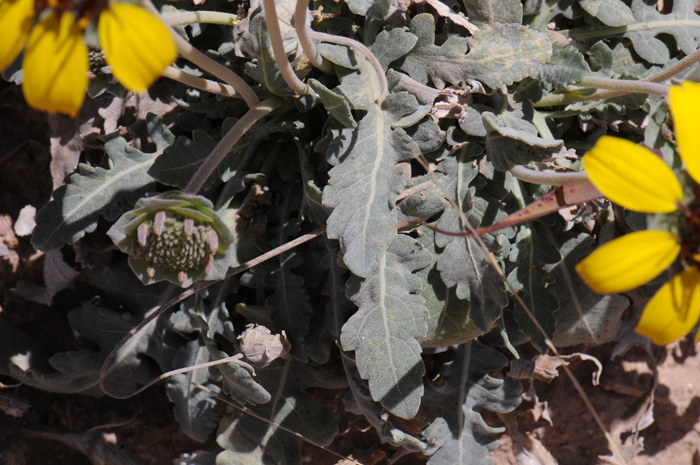
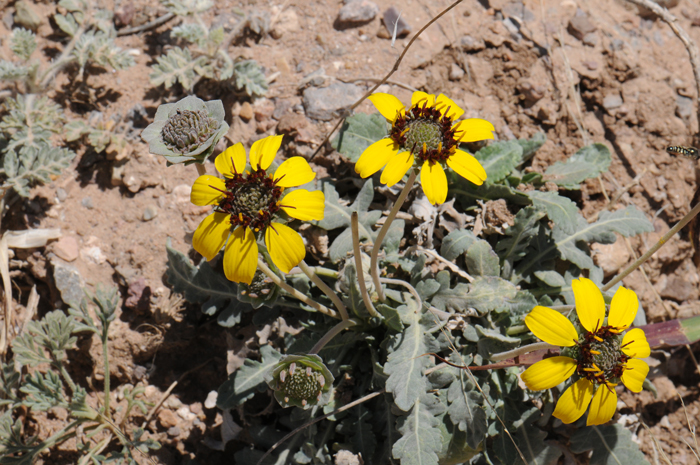
Scientific Name: Berlandiera lyrata
Common Name: Lyreleaf Greeneyes
Also Called: Chocolate Daisy, Chocolate Flower, Green-eyed Lyre Leaf, Greeneyes, Lyre-leaf
Family: Asteraceae, Sunflower Family
Synonyms: (Berlandiera incisa, Berlandiera lyrata var. macrophylla)
Status: Native
Duration: Perennial; taproot.
Size: 2 feet (60 cm) or more (4 feet/120 cm).
Growth Form: Forb/herb; basal rosettes; stems erect or decumbent; plants often branched, branches striped with parallel, longitudinal lines (striate); plants approaching white in color (canescent) and covered in dense soft often matted short hairs (tomentose); chocolate-like scent.
Leaves: Green, grayish-green above, whitish underneath; plants "leafy"; leaves velvety; alternate; leaves on long stems (petioles), leaf shape variable, oblanceolate or obovate to spatulate, often lyrate, sometimes pinnatifid; leaf edges (margins) with rounded teeth or scalloped edge (crenate) or not lobed or toothed (entire).
Flower Color: Deep yellow to orange; flower heads large, showy; both ray and disk flowers (radiate); flowers solitary with long hairy stalks (peduncles); when the outer (ray) flowers fall, a green disc shape remains, thus one of the common name "green-eyes"; ray flowers deep yellow to orange-yellow with notable venation of red to maroon; the bracts or phyllaries surrounding the floral heads are obovate to ovate, and quite showy; the fruit is a pubescent cypsela, strongly flattened and also a showy cup-like structure.
Flowering Season: April to October or year round.
Elevation: 2,200 to 7,000 feet (670-2,100 m).
Habitat Preferences: Dry sandy loams, rocky limestone soils, irrigated fields, disturbed soils, roadsides, plains, mesas, grasslands with mesquite, oak and juniper.
Recorded Range: Lyreleaf Greeneyes is found in the southwest United States; AZ, CO, KS, NM, OK and TX and northern Mexico. In the United States, the primary distribution of Lyreleaf Greeneyes is centered over New Mexico. In Arizona limited distribution the southern and southeast parts of the state.
North America & US County Distribution Map for Berlandiera lyrata.
North America species range map for Berlandiera lyrata:
North American range map courtesy of Virginia Tech, Dept. of Forest Resources & Environmental Conservation
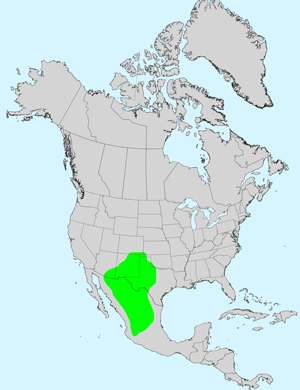
U.S. Weed Information: Unknown
Invasive/Noxious Weed Information: Unknown
Wetland Indicator: Unknown
Threatened/Endangered Information: Unknown
In the Southwestern United States: Arizona has 1 species of Berlandiera, California, Nevada and Utah haves 0 species, New Mexico has 2 species and Texas has 3 species. All data is approximate and subject to taxonomic changes.
Comments: Lyreleaf Greeneyes is so named because the leaves are so variable. They may be oblanceolate, obovate or pinnately lobed (lyrate). It is readily available as a southwest desert landscape plant because of its bright color and its chocolate scent. Lyreleaf flowers open at night and begin to droop as the temperatures begin to warm up.
The species epithet "lyrata" is derived from the New Latin word "lyratus" a reference to an ancient musical instrument known as "a lyre,", the shape or outline may loosely be described as having multiple lobes. Now a botanical term "lyrated" relating to lobes and pinnately divided leaves. It is also an accepted zoology term referring to the tails of certain birds; and from (-ata/-atum/-atus:) an adjectival suffix for nouns indicating possession or resemblance; thus perhaps a reference to their pinnately lobed leaves.
See full species account from from Native American Ethnobotany, University of Michigan, Dearborn.

